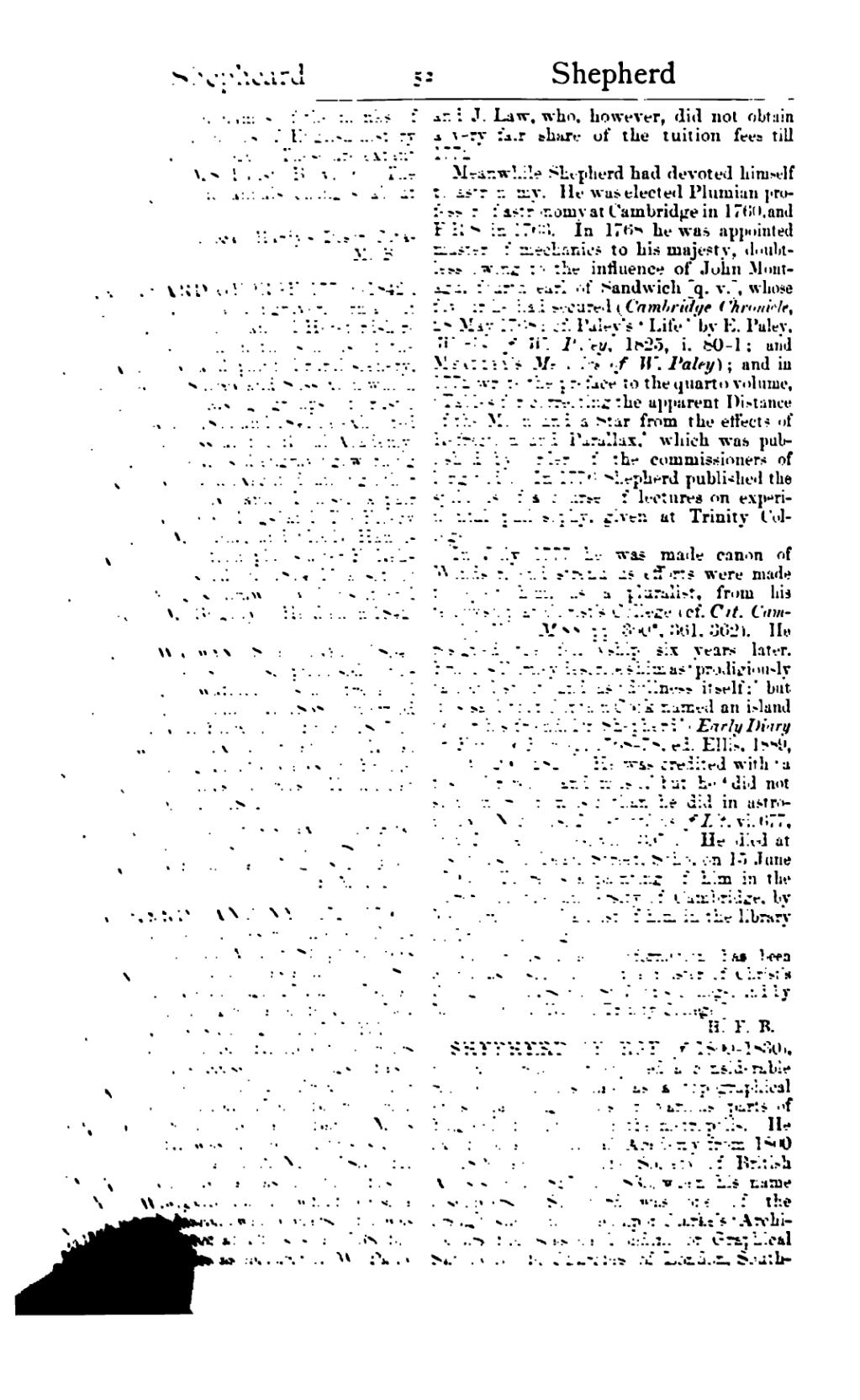wrote a list of the names of the monks of the house and chronicles of English history from 1066 down to 1320. These are extant in the Cotton. MS. Faust. B. vi. 6. The handwriting of the annals changes about 1320.
[Tanner's Bibliotheca; Hardy's Descr. Catalogue, iii. 101.]
SHEPHEARD, GEORGE (1770?–1842), watercolour-painter and engraver, born about 1770, was a member of an old Herefordshire family. He studied in the schools of the Royal Academy, and painted rural scenery, chiefly views in Surrey and Sussex, in which he introduced pleasing groups of rustic figures; between 1811 and 1841 he exhibited works of this class at the Royal Academy. Shepheard also practised engraving, working in a mixed style, and executed, among other good prints, ‘Jenny’ and ‘Louisa,’ a pair after Bunbury, 1795; ‘Dogs’ and ‘The Fleecy Charge,’ after Morland; and ‘Lady Hamilton's Attitudes,’ fifteen plates after F. Rehberg. He published in 1814–15 a set of ‘Vignette Designs,’ drawn by himself and etched by G. M. Brighty. He died in 1842, aged 72.
George Walwyn Shepheard (1804–1852), his eldest son, also practised landscape-painting in watercolours, and travelled much on the continent. In 1838 he married an Italian lady at Florence. From 1837 to 1851 he was an exhibitor at the Royal Academy, sending chiefly views in France and Italy and studies of trees. He died at Brighton on 26 Jan. 1852.
[Redgrave's Dict. of Artists; exhibition catalogues; manuscript list of members of the Artists' Annuity Fund; Gent. Mag. 1852, i. 316.]
SHEPHERD, ANTONY (1721–1796), Plumian professor of astronomy at Cambridge, elder son of Arthur Shepherd, was born at Kendal in 1721, was admitted to St. John's College, Cambridge 27 June 1740, at the age of nineteen, graduated B.A. in 1743, M.A. (from Christ's College) in 1747, B.D. in 1761, and D.D. in 1766. He took holy orders and held a long succession of livings—Eastling, Kent, 1745 to 1752; Croxton, near Thetford, from 21 Jan. 1756; Bourne from 30 March 1758 to 1763; and Barton Mills from 1778. He was fellow of Christ's College from 9 Jan. 1747 to 22 Nov. 1783. He had (December 1765) a lease of the tithes of Burnham Westgate, out of which arose a lawsuit which lasted twenty years. He was appointed sole tutor at Christ's in 1768, but entrusted his duties as lecturer to W. Paley and J. Law, who, however, did not obtain a very fair share of the tuition fees till 1772.
Meanwhile Shepherd had devoted himself to astronomy. He was elected Plumian professor of astronomy at Cambridge in 1760, and F.R.S. in 1763. In 1768 he was appointed master of mechanics to his majesty, doubtless owing to the influence of John Montagu, fourth earl of Sandwich [q. v.], whose favour he had secured (Cambridge Chronicle, 28 May 1768; cf. Paley's ‘Life’ by E. Paley, Works of W. Paley, 1825, i. 80–1; and Meadley's Memoirs of W. Paley); and in 1772 wrote the preface to the quarto volume, ‘Tables for correcting the apparent Distance of the Moon and a Star from the effects of Refraction and Parallax,’ which was published by order of the commissioners of longitude. In 1776 Shepherd published the syllabus of a course of lectures on experimental philosophy, given at Trinity College.
In July 1777 he was made canon of Windsor, and strenuous efforts were made to eject him, as a pluralist, from his fellowship at Christ's College (cf. Cat. Cambridge Univ. MSS. pp. 360*, 361, 362). He resigned the fellowship six years later. Frances Burney describes him as ‘prodigiously tall and stout’ and as ‘dullness itself;’ but it is said that Captain Cook named an island ‘after his friend, Dr. Shepherd’ (Early Diary of Frances Burney, 1768–78, ed. Ellis, 1889, i. 109, 206, 282). He was credited with ‘a taste for wine and music,’ but he ‘did not shine more in music than he did in astronomy’ (Nichols, Illustrations of Lit. vi. 677, and Lit. Anecdotes, viii. 395). He died at his house in Dean Street, Soho, on 15 June 1796. There is a painting of him in the library of the university of Cambridge, by Vanderpuyl, and a bust of him in the library of Trinity College.
[Authorities cited; information has been courteously supplied by the master of Christ's College, the bursar of St. John's College, and by Mr. W. W. R. Ball of Trinity College.]
SHEPHERD, GEORGE (fl. 1800–1830), watercolour-painter, enjoyed a considerable reputation in his day as a topographical artist, painting views in various parts of England, but chiefly in the metropolis. He exhibited at the Royal Academy from 1800 to 1829, and with the Society of British Artists from 1827 to 1830, when his name disappears. Shepherd was one of the draughtsmen employed upon Clarke's ‘Architectura Ecclesiastica Londini, or Graphical Survey of the Churches of London, South-
